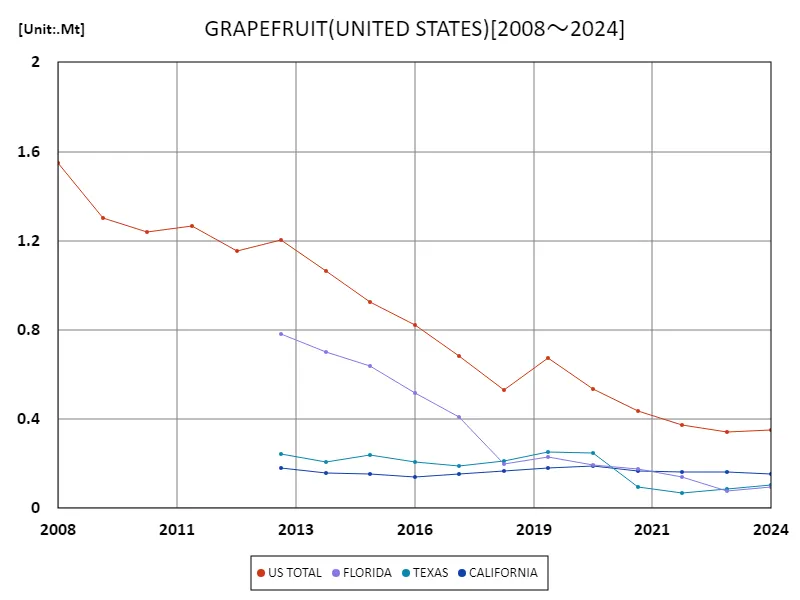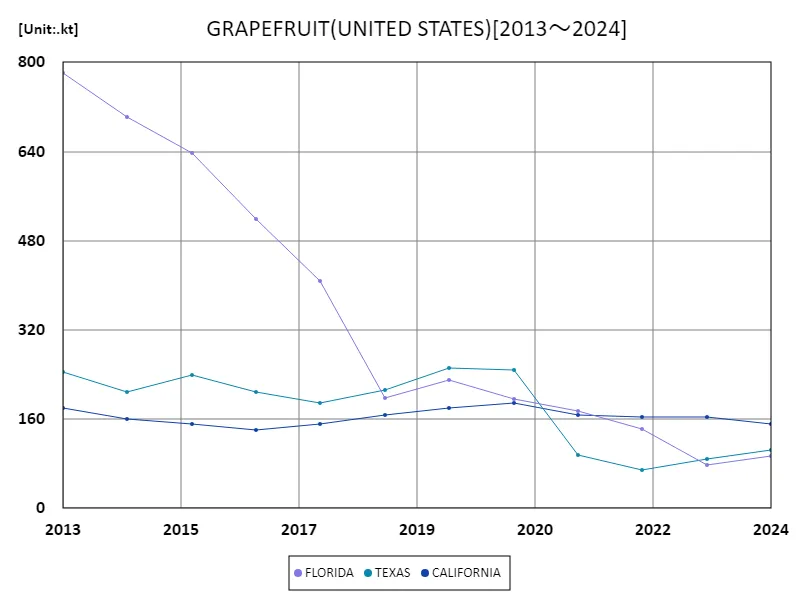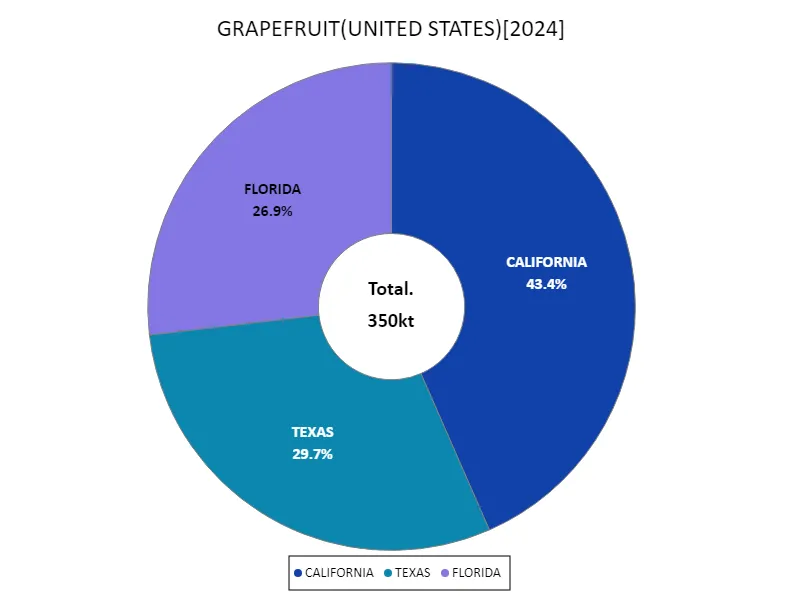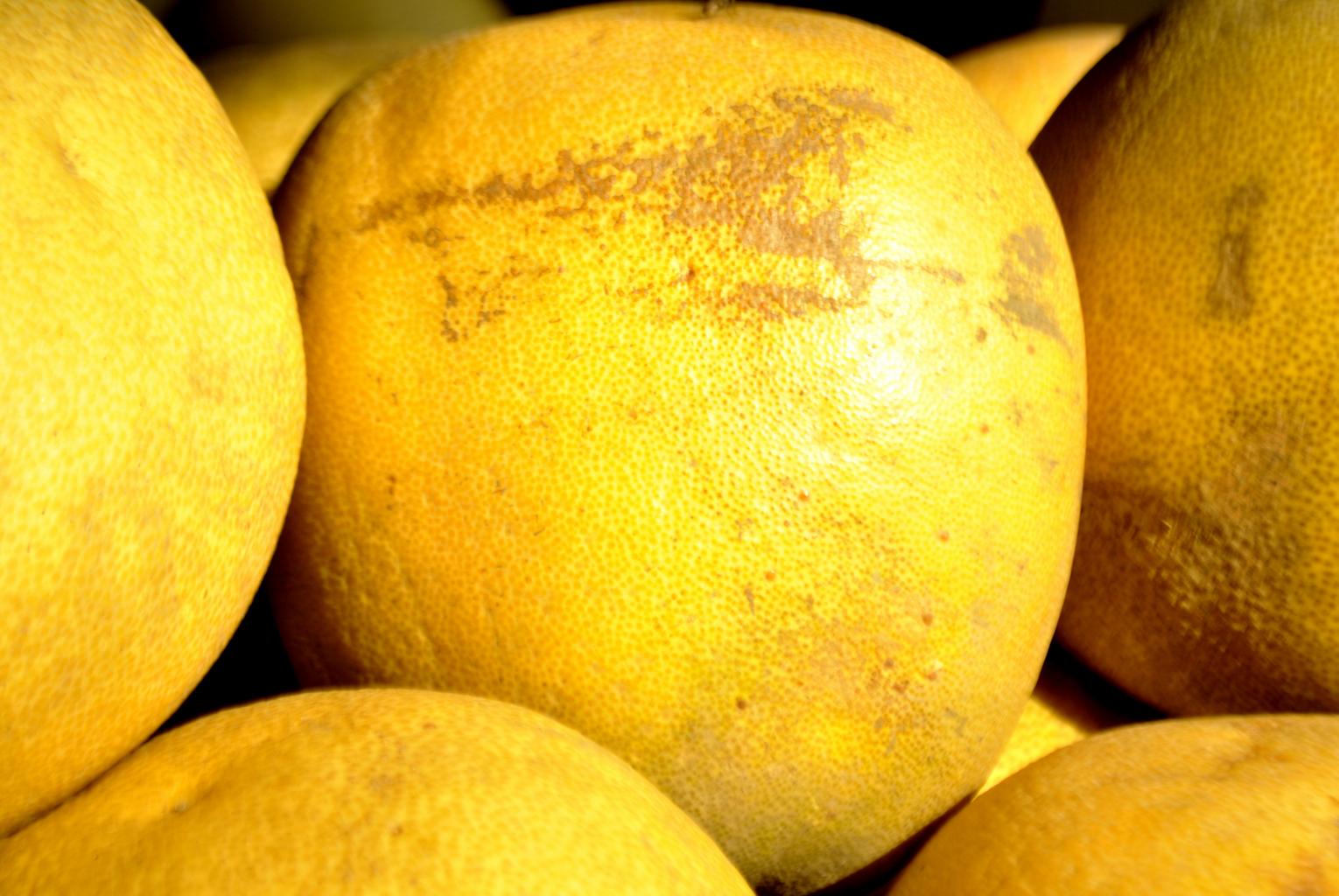Abstract
The annual production of grapefruit in the United States has tended to remain stable for many years, but has shown some fluctuations in recent years. Production in 2024 is expected to be 353kt, the highest figure in several years. The American grapefruit industry is centered on cultivation in Florida and Texas, with climate and soil conditions having a significant impact on production volume. Florida in particular has a warm climate that is ideal for growing grapefruit, and grapefruit production is prominent throughout the state. On the other hand, production volumes can fluctuate from year to year due to climate change and disease in the producing areas. Another factor contributing to the maintenance of production volume is the stable demand for grapefruit due to consumers becoming more health conscious. Going forward, sustainable production will be required while responding to climate change and changes in market demand.
Grapefruit production
Between its peak in 2008 and 2024, U.S. grapefruit production declined 22.8%. Several factors are behind this decline. Firstly, climate change is resulting in changes in temperature and precipitation in growing regions, affecting crop growth. Weather disasters such as hurricanes and cold weather can impact production, especially in Florida. Changing markets are also a factor, with consumers’ changing health consciousness and increased demand for other fruits affecting grapefruit production. Additionally, rising production costs and labor shortages are also contributing to the decline in production. On the other hand, technological innovation and sustainable agricultural initiatives are helping to restore production in some regions. In the future, adapting to climate change and changes in market demand will remain a challenge, and we will need to aim for sustainable grapefruit production.


The maximum is 1.55Mt[2008] of US TOTAL, and the current value is about 22.8%
Grapefruit production (50 US states)
Florida grapefruit production is now down 12.1% since its peak in 2013. This decline is due to several factors. First of all, there are changes in climatic conditions. Florida in particular is prone to cold winters and hurricanes, and these weather conditions have a direct impact on crops. Additionally, agricultural problems such as disease and pests are also factors contributing to reduced production. Additionally, advances in agricultural technology and changes in management practices have contributed to some recovery in production, but their overall impact has been limited. Demand for grapefruit has remained relatively stable due to consumers’ increasing health consciousness, but it is also important to take into account the increasing competition from other fruits and foods. In the future, the adoption of sustainable agricultural practices and increased adaptation to climate change will play an important role in stabilizing grapefruit production in Florida.


The maximum is 780kt[2013] of FLORIDA, and the current value is about 12.1%
Grapefruit production (latest year, 50 US states)
Looking at the latest data for grapefruit production in the United States for 2024, total production is 350kt, of which California produces 152kt. This figure is higher than the average production of 117kt over the past few years, with California accounting for a particularly large share. As California’s production reaches its peak overall, regional differences in climatic conditions and agricultural techniques have a significant impact on production volumes. California’s warm climate is ideal for growing grapefruit, which is likely one of the reasons for its high production. On the other hand, the overall production volume is slightly lower than average, which may be due to influences from other producing regions, as well as changes in climate and market demand. Florida and Texas in particular are important production areas, and fluctuations in production in these areas can affect overall production. Grapefruit is popular among consumers due to its increasing health consciousness and diverse uses, but technological innovation and sustainable agricultural practices in the production process will become increasingly important in the future. In the future, it will be necessary to maintain a stable supply while responding flexibly to changes in climatic conditions and market demands.


The maximum is 152kt of CALIFORNIA, the average is 117kt, and the total is 350kt
Main data
| GRAPEFRUIT(ALL CLASSES, ALL PRODUCTION PRACTICES, UTILIZED, PRODUCTION, UNITED STATES) [kt] | ||||
|---|---|---|---|---|
| US TOTAL | CALIFORNIA | TEXAS | FLORIDA | |
| 2024 | 353 | 152 | 104 | 94 |
| 2023 | 341 | 164 | 88 | 77 |
| 2022 | 374 | 164 | 68 | 142 |
| 2021 | 438 | 168 | 96 | 174 |
| 2020 | 535 | 188 | 248 | 196 |
| 2019 | 676 | 180 | 252 | 230 |
| 2018 | 530 | 168 | 212 | 198 |
| 2017 | 685 | 152 | 188 | 408 |
| 2016 | 823 | 140 | 208 | 519 |
| 2015 | 926 | 152 | 240 | 638 |
| 2014 | 1066 | 160 | 208 | 701 |
| 2013 | 1204 | 180 | 244 | 780 |
| 2012 | 1153 | |||
| 2011 | 1264 | |||
| 2010 | 1238 | |||
| 2009 | 1304 | |||
| 2008 | 1548 | |||



Comments